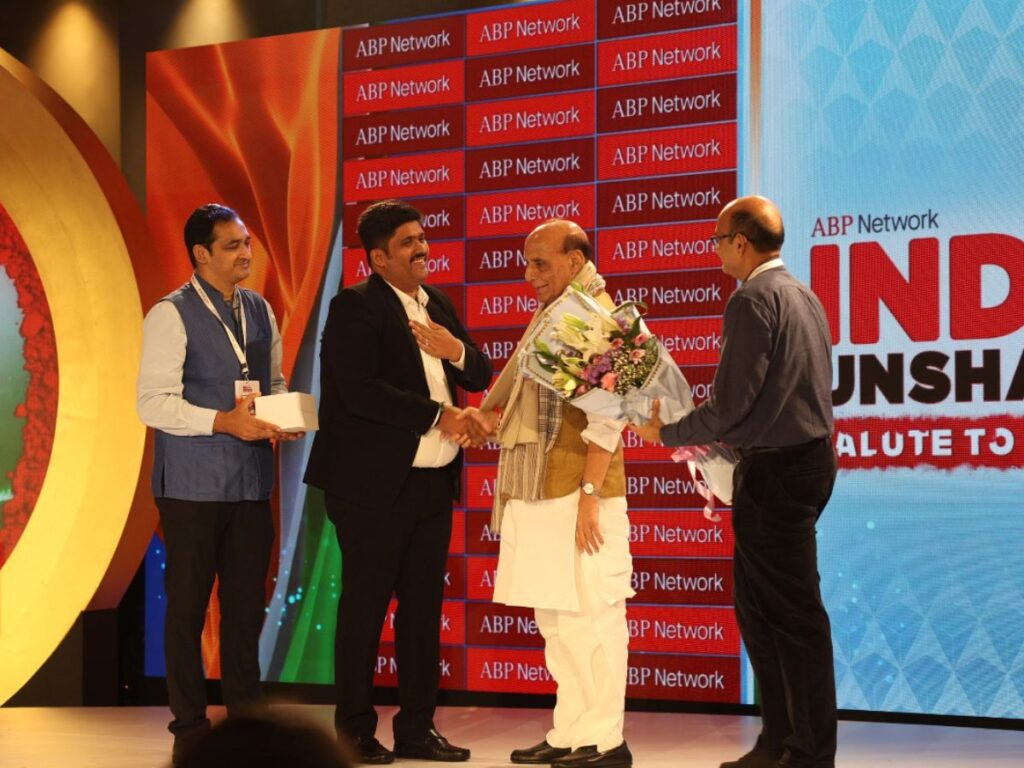ISRO – India’s Rise as a Global Space Power
When people think of space agencies, they often think of NASA or ESA. But in the last few decades ISRO has quietly become one of the most respected names in the global space community. From launching small experimental rockets from a coastal village in Kerala to placing spacecraft around the Moon and Mars, the Indian Space Research Organisation has shown what focused vision, teamwork and smart use of resources can achieve.
Today ISRO is not only helping India with weather forecasts, communication, navigation and disaster management, it is also supporting many other countries by launching their satellites. For students and young aspirants, the story of ISRO is proof that even with limited budget, a country can achieve world-class results if its scientists and engineers stay disciplined and innovative.
Vision and Core Objectives of ISRO
The Indian Space Research Organisation was founded with a very clear idea: space technology must directly help ordinary people. Unlike many other nations where early space programmes were mainly about prestige or military power, ISRO focused on development.
Some of the main objectives of ISRO are:
Use space technology for national development
Telecommunication, television broadcasting and internet services in remote areas
Tele-education and tele-medicine for villages and small towns
Earth observation and resource management
Weather forecasting
Monitoring of crops, forests, water bodies and sea conditions
Support in disaster management during cyclones, floods and forest fires
Development of reliable launch vehicles
Design and build rockets that can place Indian and foreign satellites in different orbits
Reduce dependence on other countries for launching satellites
Space science and planetary exploration
Study the Moon, Mars and other celestial bodies
Encourage scientific research in astronomy and astrophysics
Promote self-reliance and build high-end technology in India
Develop indigenous systems like navigation, cryogenic engines and advanced materials
Support Indian industries and start-ups working in the space sector
Because of this development-oriented vision, ISRO has always tried to keep costs low, make maximum use of local talent and ensure that each mission gives practical benefits to the nation.
PSLV – The Trusted Workhorse Launch Vehicle
One of the biggest reasons for the success of ISRO is its rockets. Among them, the Polar Satellite Launch Vehicle (PSLV) is the star performer. Many scientists call it the “workhorse” of the Indian Space Research Organisation because it has launched the highest number of satellites with very high reliability.
PSLV is a four-stage rocket that can place satellites into polar orbit, low Earth orbit and even some special orbits like the one used for Mars and Moon missions. It can carry multiple satellites in a single flight, which makes missions more economical. For many countries that cannot afford very expensive launches, ISRO and its PSLV have become a favourite option.
PSLV has also given ISRO a reputation for “maximum achievement with minimum cost”. This reliable rocket has taken Indian missions like Chandrayaan-1 and Mangalyaan to space and has also launched satellites from Europe, Asia, Africa and the Americas.
Major PSLV Flights and Record-Breaking Launches
Over the years, PSLV has completed dozens of missions. Instead of listing every single launch, we can understand its journey through some landmark flights:
| PSLV Mission | Year | Key Payload / Mission | Special Remark |
|---|---|---|---|
| PSLV-D2 | 1994 | IRS-P2 (remote sensing) | First successful operational PSLV flight |
| PSLV-C2 | 1999 | IRS-P4 + 2 foreign satellites | First time PSLV launched multiple satellites |
| PSLV-C5 | 2003 | Resourcesat-1 | Strengthened India’s earth observation capability |
| PSLV-C11 | 2008 | Chandrayaan-1 | Sent India’s first mission to the Moon |
| PSLV-C15 | 2010 | Cartosat-2B + others | High-resolution mapping for India |
| PSLV-C25 | 2013 | Mars Orbiter Mission (Mangalyaan) | Launched India’s first mission to Mars |
| PSLV-C34 | 2016 | 20 satellites | Demonstrated multi-satellite launch capability |
| PSLV-C37 | 2017 | 104 satellites | World record for launching 104 satellites in a single mission |
| PSLV-C40 | 2018 | Cartosat-2 Series + 30 co-passengers | Restarted flights after a minor setback, proving reliability again |
These missions show how ISRO used PSLV not only for Indian needs but also as a commercial launch vehicle. The Indian Space Research Organisation has earned valuable foreign exchange by launching satellites for other nations, and this money is again used to improve Indian space technology.
Mars Orbiter Mission (Mangalyaan) – India’s Historic Mars Journey
One of the proudest moments for ISRO and for every Indian was the success of the Mars Orbiter Mission, commonly called Mangalyaan. Launched in November 2013 by PSLV-C25, this mission made India the first Asian country to reach Mars orbit and the first nation in the world to do so in its very first attempt.
What made Mangalyaan special?
Low cost: The total cost was far lower than many Hollywood space movies. This showed how efficiently the Indian Space Research Organisation uses its resources.
Complex journey: The spacecraft had to travel more than 650 million kilometres, performing tricky manoeuvres to escape Earth’s gravity and enter the gravity field of Mars.
Scientific goals: Mangalyaan carried instruments to study the Martian atmosphere, surface features and mineral composition. It sent thousands of images and valuable data for scientists.
Symbol of confidence: For young students, the mission proved that Indian scientists and engineers can handle extremely complex interplanetary missions.
Mangalyaan gave ISRO a huge boost in international respect. Other space agencies started looking at India as a reliable partner for deep space exploration. For the Indian public, this mission created a new emotional connection with the ISRO story and inspired many children to dream of becoming scientists and officers in the future.
Chandrayaan Missions – India’s Exploration of the Moon
The Moon has always been a special target for space agencies, and the Indian Space Research Organisation is no different. The Chandrayaan series shows how ISRO has steadily improved its capability and understanding of our nearest neighbour.
Chandrayaan-1 (2008)
Launched by PSLV-C11
Main aim was to map the lunar surface and search for minerals
A major achievement was the discovery of water molecules on the Moon, done in collaboration with international instruments
Chandrayaan-2 (2019)
This mission included an orbiter, a lander (Vikram) and a rover (Pragyan)
The orbiter successfully entered lunar orbit and is still providing data
The lander-rover attempt faced difficulties during the final landing phase, but ISRO gained valuable experience in soft-landing technology
The Chandrayaan programme shows a key feature of ISRO: even when there is a partial failure, the organisation does not give up. Instead, the scientists analyse every detail, learn from mistakes and prepare for a better comeback.
Chandrayaan-3 and India’s Successful Soft Landing
The real comeback story came with Chandrayaan-3. Learning from the experience of Chandrayaan-2, ISRO designed a simpler mission focused only on soft landing and rover exploration. The orbiter from Chandrayaan-2 was already working well, so it was reused for communication support.
In this mission, the lander again carried the name Vikram, and the rover was Pragyan. When Vikram successfully performed a soft landing near the Moon’s south pole region, India became one of the few nations to achieve this difficult task.
Chandrayaan-3 proved several important points:
The Indian Space Research Organisation has mastered soft-landing technology in challenging terrain.
India can conduct long-term, step-by-step programmes in space exploration.
For students, it showed the value of patience, persistence and detailed planning.
The success of Chandrayaan-3 further strengthened the global image of ISRO and opened the door for more advanced lunar and planetary missions in the future.
Gaganyaan – India’s First Human Spaceflight Mission

So far, ISRO has sent only machines into space. The next big dream is to send Indian astronauts into orbit on an Indian rocket and spacecraft. This dream is called Gaganyaan.
Gaganyaan aims to place a crew of Indian astronauts, called “Vyomnauts” by some, into low Earth orbit for a few days and bring them back safely to Earth. The mission has several key elements:
Human-rated launch vehicle: The LVM3 rocket (earlier known as GSLV Mk III) is being modified with extra safety systems so that it can carry humans.
Crew module and service module: The Indian Space Research Organisation is building a special capsule where astronauts will stay. It must maintain correct temperature, pressure and oxygen level.
Escape system: A powerful launch escape system is designed to pull the crew module away from the rocket in case of any emergency during launch.
Training of astronauts: Selected Indian Air Force pilots are undergoing advanced training in survival, zero-gravity adaptation and use of spacecraft instruments.
Before sending humans, ISRO is carrying out several test flights with robotic or instrumented dummies. Safety is the first priority because even a small error can risk human life. Gaganyaan will mark a new chapter for ISRO, putting India in the group of countries that have their own human spaceflight capability.
Important ISRO Dates and Major Missions (1969–2025)
| Date | Mission / Event | Launch Vehicle / System | Key Details |
|---|---|---|---|
| 15 Aug 1969 | Formation of ISRO | – | Indian Space Research Organisation officially formed as India’s national space agency. |
| 1 Jun 1972 | Department of Space created | – | ISRO brought under the Department of Space for better coordination and policy support. |
| 19 Apr 1975 | Launch of Aryabhata | Soviet launcher | India’s first satellite; marked the beginning of India’s satellite era. |
| 7 Jun 1979 | Bhaskara-II launch | Soviet launcher | Early Earth observation satellite for hydrology, forestry and oceanography. |
| 18 Jul 1980 | First successful SLV-3 launch | SLV-3 | Rohini satellite placed in orbit; India joined nations with independent launch capability. |
| 15 Oct 1994 | PSLV-D2 – first successful PSLV flight | PSLV | IRS-P2 satellite placed in orbit; PSLV became ISRO’s operational “workhorse” launch vehicle. |
| 22 May 1999 | PSLV-C2 – first multi-satellite mission | PSLV | IRS-P4 plus two foreign satellites launched together; started ISRO’s commercial launch services. |
| 10 Apr 2003 | GSLV operational flight with GSAT-2 | GSLV | Strengthened India’s communication satellite capability in geostationary orbit. |
| 22 Oct 2008 | Chandrayaan-1 launch | PSLV-C11 | India’s first mission to the Moon; carried multiple international scientific instruments. |
| Sep 2009 | Discovery of water molecules on the Moon | – | Data from Chandrayaan-1 confirmed presence of water molecules on the lunar surface. |
| 5 Nov 2013 | Mars Orbiter Mission (Mangalyaan) launch | PSLV-C25 | India’s first interplanetary mission, sent towards Mars on a highly cost-effective trajectory. |
| 24 Sep 2014 | Mars Orbiter enters Mars orbit | – | India became the first country to reach Mars in its first attempt. |
| 15 Feb 2017 | PSLV-C37 – 104 satellites in one launch | PSLV-XL | World record for launching 104 satellites in a single mission. |
| 22 Jul 2019 | Chandrayaan-2 launch | GSLV Mk III (LVM3-M1) | Orbiter + Vikram lander + Pragyan rover launched towards the Moon. |
| 7 Sep 2019 | Chandrayaan-2 landing attempt | – | Vikram lander lost communication during final descent; orbiter continues scientific work. |
| 14 Jul 2023 | Chandrayaan-3 launch | LVM3-M4 | Dedicated mission to demonstrate soft landing and rover operations on the Moon. |
| 23 Aug 2023 | Chandrayaan-3 soft landing | – | Vikram lander and Pragyan rover successfully operated near lunar south polar region. |
| 21 Oct 2023 | Gaganyaan TV-D1 test flight | Test Vehicle TV-D1 | In-flight test of crew escape system, key milestone for India’s human spaceflight programme. |
| 1 Jan 2024 | PSLV-C58 / XPoSat Mission | PSLV-DL | India’s first dedicated X-ray polarimetry satellite to study black holes and neutron stars. |
| 17 Feb 2024 | GSLV-F14 / INSAT-3DS | GSLV | Advanced meteorological satellite for weather forecasting and disaster warning over India and ocean. |
| 16 Aug 2024 | SSLV-D3 / EOS-08 | SSLV | Small Satellite Launch Vehicle mission carrying an Earth observation payload. |
| 5 Dec 2024 | PSLV-C59 / Proba-3 Mission | PSLV-XL | ESA’s Proba-3 solar mission launched by ISRO to study the Sun’s corona and space weather. |
| 30 Dec 2024 | PSLV-C60 / SPADEX Mission | PSLV | Launched SPADEX satellites for in-orbit docking and formation-flying experiments. |
| 16 Jan 2025 | First Successful Space Docking (SPADEX) | – | ISRO completed successful spacecraft docking; India became the 4th country to achieve this. |
| 29 Jan 2025 | GSLV-F15 / NVS-02 NavIC Satellite | GSLV-F15 | Navigation satellite for India’s NavIC system; also marked ISRO’s 100th mission. |
| 13 Mar 2025 | SPADEX Undocking Event | – | Successful undocking demonstration in space as part of the SPADEX mission. |
| 18 Mar 2025 | Circum-navigation of SPADEX Spacecraft | – | SPADEX spacecraft completed relative navigation and orbiting manoeuvres. |
| 18 May 2025 | PSLV-C61 / EOS-09 Mission | PSLV-XL | All-weather radar imaging Earth observation satellite; mission not fully accomplished but launch done. |
| 30 Jul 2025 | GSLV-F16 / NISAR Mission | GSLV-F16 | Joint NASA–ISRO synthetic aperture radar satellite for detailed Earth monitoring. |
| 2 Nov 2025 | LVM3-M5 / CMS-03 | LVM3-M5 | High-capacity communication satellite launched to Geosynchronous Transfer Orbit. |
How ISRO Inspires Students and Future Scientists
Beyond rockets and satellites, the biggest success of ISRO is inspiration. Millions of school and college students follow every launch and mission update with excitement. The journey of the Indian Space Research Organisation gives several strong messages to the youth:
Dream big, start small
ISRO began in a small church building at Thumba. Today it operates huge launch centres and advanced laboratories.
Focus on purpose, not only on glamour
Many ISRO missions do not look flashy but quietly help farmers, fishermen, disaster-management teams and remote villages.
Teamwork is everything
Every mission is the result of the combined efforts of thousands of scientists, engineers, technicians and support staff. No single person can do it alone.
Failure is a step towards success
Some launches have failed, some missions have faced setbacks. Yet the Indian Space Research Organisation always treats them as lessons and moves forward with stronger designs.
Opportunities in science, engineering and defence
Students interested in physics, maths, computer science, electronics or mechanical engineering can dream of working with organisations like ISRO or in related defence services.
For defence aspirants preparing for exams and SSB interviews, knowledge about ISRO missions is very valuable. Questions on national achievements in space are common in written papers, PPDT stories, lecturettes and interviews. A clear understanding of the work of the Indian Space Research Organisation helps candidates speak confidently and with pride.
Doon Defence Dreamers – Preparing Future Officers for Space and Defence Careers
As India’s presence in space grows, the country needs officers who understand technology, national security and strategic importance of missions carried out by ISRO. This is where institutes like Doon Defence Dreamers (Best CDS coaching institute in Dehradun) play a meaningful role.
Doon Defence Dreamers trains young aspirants for NDA, CDS, AFCAT and other defence entries. Along with regular subjects, students are encouraged to stay updated about the achievements of the Indian Space Research Organisation, DRDO and other scientific agencies. Teachers explain how satellite communication, navigation and surveillance support modern defence operations on land, sea and air.
Through classroom sessions, doubt-clearing, group discussions and SSB-oriented activities, aspirants learn to:
Discuss recent missions like Chandrayaan-3, Mangalyaan and upcoming Gaganyaan in a clear and structured way
Connect the work of ISRO with national security, disaster relief and border management
Build confidence for lecturette topics, group discussions and personal interviews where knowledge about the Indian Space Research Organisation often impresses the assessors
In this way, Doon Defence Dreamers is not just preparing students to clear an exam. It is helping them think like future officers who understand how India’s space power and defence power move together. When these young leaders wear the uniform tomorrow, they will carry with them the inspiration of ISRO and the disciplined training they received on the ground.





























